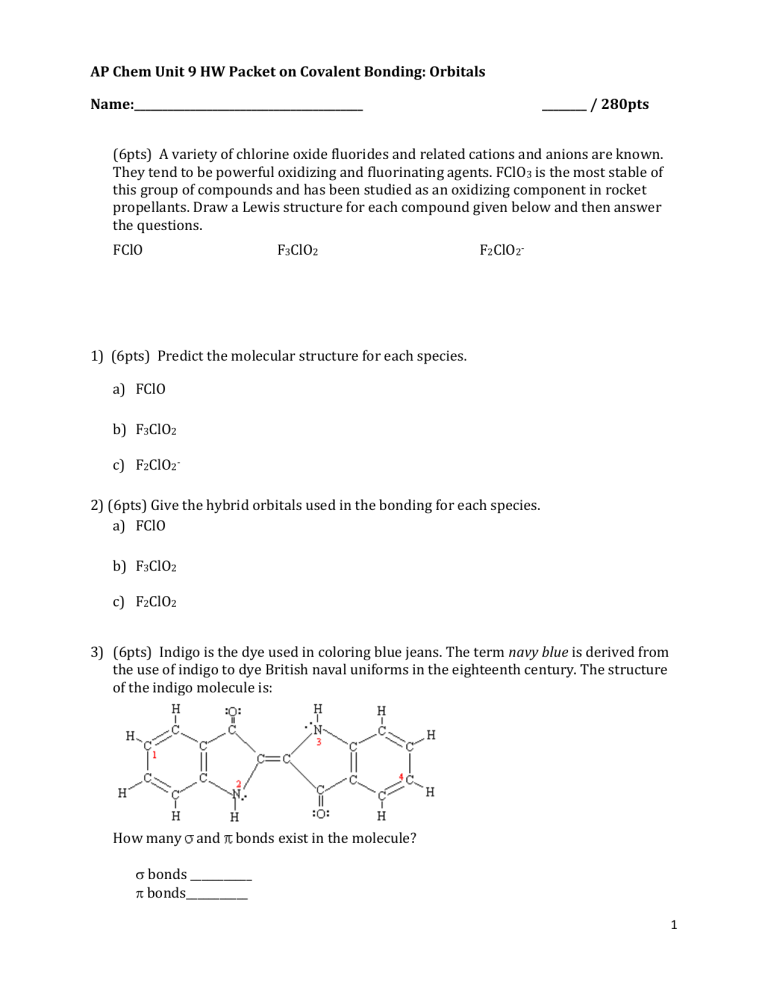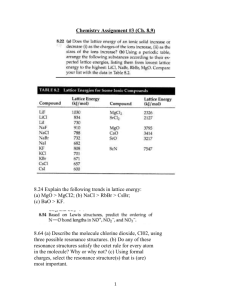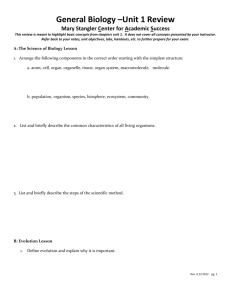CHAPTER 9 HOMEWORK on Covalent Bonding: Orbitals

AP Chem Unit 9 HW Packet on Covalent Bonding: Orbitals
Name:_________________________________________ ________ / 280pts
(6pts) A variety of chlorine oxide fluorides and related cations and anions are known.
They tend to be powerful oxidizing and fluorinating agents. FClO
3
is the most stable of this group of compounds and has been studied as an oxidizing component in rocket propellants. Draw a Lewis structure for each compound given below and then answer the questions.
F
2
ClO
2-
FClO F
3
ClO
2
1) (6pts) Predict the molecular structure for each species. a) FClO b) F
3
ClO
2 c) F
2
ClO
2-
2) (6pts) Give the hybrid orbitals used in the bonding for each species. a) FClO b) F
3
ClO
2 c) F
2
ClO
2
3) (6pts) Indigo is the dye used in coloring blue jeans. The term navy blue is derived from the use of indigo to dye British naval uniforms in the eighteenth century. The structure of the indigo molecule is:
How many and bonds exist in the molecule?
bonds ___________
bonds___________
1
4) (8pts) Indicate the hybrid orbitals used by the atoms listed below:
Atom Number Hybrid
C-1 ___________
N-2 ____________
N-3 ____________
C-4 ____________
5) (24pts) Consider the molecular orbital model for these diatomic species:
H
2
B
2
F
2
Fill in the correct number of electrons for each molecular orbital in the table below.
If a molecular orbital is empty be sure to put a 0 in the table. Be careful of the order listed on the table.
MO
2p*
2p *
2p
2p
2s*
2s
1s*
1s
H
2
B
2
F
2
6) (6pts)Consider the molecular orbital model for these diatomic species:
H
2
B
2
F
2
Calculate the bond order for each species:
H
2
Species
B
2
F
2
Bond order
2
7) (6pts) Consider the molecular orbital model for these diatomic species:
H
2
B
2
F
2
Mark each species that is paramagnetic.
H
2
B
2
F
2
8) (9pts) Place the species C
2+
, C
2
, and C
2-
in order of increasing bond length and increasing bond energy. Show the MO diagram for C
2
Bond length:
Bond energy:
9) (8pts) For each of the species, calculate the bond order and describe the magnetism.
Show your work for partial credit.
Species Bond Order Magnetism
CN
NO -
3
10) (12pts)Draw a Lewis structure for the given skeletal molecule by adding multiple bonds and lone pairs where needed then use it to answer questions 1-4 below a) How many carbon atoms are sp 2 hybridized? b) How many C-N bonds are formed by the overlap of a C(sp 3 ) and an N(sp 3 )? c) How many lone pairs of electrons are found in the Lewis structure of your molecule? d) How many bonds are found in this molecule?
11) (8pts) Polymers are molecules composed of smaller molecules (monomers) bonded together in long chains. Azidocarbonamide is used in forming polystyrene. When added to the molten plastic, it decomposes to nitrogen, carbon monoxide, and ammonia gases which are captured as bubbles in the molten polymer.
In the Lewis structure for this compound, lone pairs of electrons would be found on: carbon atoms nitrogen atoms oxygen atoms hydrogen atoms
4
12) (12pts) Fill in the number of lone pairs of electrons on each atom below:
N
1
N
2
N
3
N
4
O
1
O
2
13) (12pts) For each atom in the table below, give the hybridization.
Atom Number
C
C
N
1
2
1
N
N
N
2
3
4
Hybridization
14) (5pts) How many bonds are present in the molecule?
15) (12pts) Give approximate bond angles (to the nearest whole number) around each atom in the table below.
Atom
N
1
N
2
N
3
N
4
C
1
C
2
Angle
5
16) (5pts) Draw the Lewis structure for NF
3
and answer the following questions.
What are the bond angles around the central atom? _________________ a) 60 o b) 90 0 c) 109 0 d) 120 0 e) 180 0
17) (3pts) What is the shape of the molecule? __________________________________
18) (3pts) Is this molecule polar ? __________________________________________
19) (3pts) What is the hybridization on the central atom? _________________________
(18pts) For each molecule listed below draw the VSEPR model to answer the questions 1-4:
H
2
O CCl
4
SeO
3
COS SO
2
PCl
3
20) (4pts) Which of the compounds are polar?
21) (4pts) Which of the compounds exhibit at least one bond angle that is approximately
120
22) (4pts) Which of the compounds exhibit sp 3 hybridization by the central atom?
23) (4pts) Which of the following compounds have a linear shape?
6
(21pts) For each molecule listed below draw the VSEPR model to answer the questions:
ICl
5
SF
4
XeF
2
SeCl
6
AsCl
5
KrCl
4
IF
3
24) (4pts) Which of the compounds exhibit at least one bond angle that is approximately
120 ?
25) (4pts) Which of the following compounds exhibit d 2 sp 3 hybridization?
26) (4pts) Which of the following compounds have a square planar shape?
27) (4pts) Which of the following compounds are polar?
28) (6pts) The antibiotic thiarubrine-A was discovered by studying the feeding habits of wild chimpanzees in Tanzania. The structure of thiarubrine-A is
7
In the Lewis structure for the compound, lone pairs of electrons would be found on____________________
29) (12pts) For each atom in the table below, give the hybridization of thiarubrine-A
Atom
C
C
C
C
C
S
Number
1
4
7
10
13
2
Hybrydization
30) (3pts) How many bonds are in this molecule?
31) (3pts) How many bonds are in thiarubrine-A?
32) (10pts) Which of the following statements are true concerning NO
2-
?
The central nitrogen atom is sp 2 hybridized.
One of the nitrogen-oxygen bonds is longer than the other.
The bond angles about the central nitrogen atom are about 120°.
There are two sigma bonds in NO
2-
.
There are no resonance structures for NO
2-
.
33) (15pts) Draw and give the expected hybridization for the central atom for each of the following molecules or ions.
Molecule or ion Hybridization
CO
2
IF
4+
SeCl
2
KrF
4
SF
6
8









